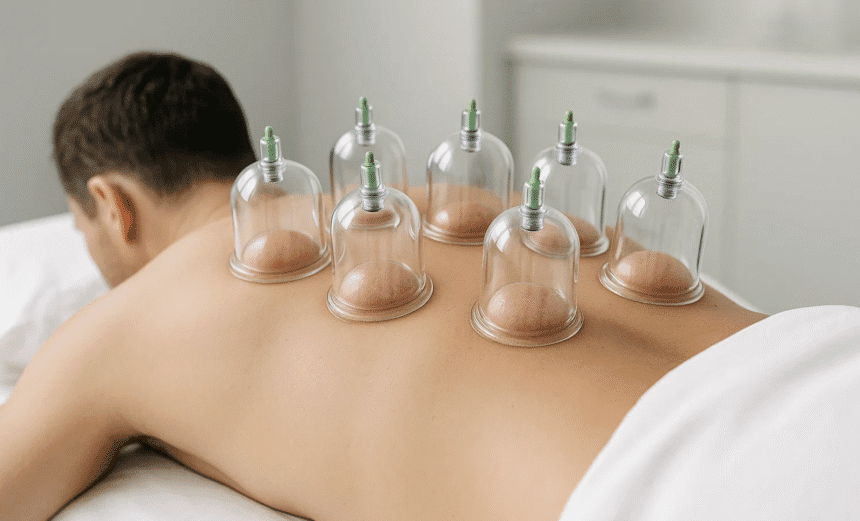Hajama therapy, also known as cupping therapy, is one of the most ancient healing methods practiced by civilizations across the globe. The therapy involves placing special cups on the skin to create suction, which stimulates blood circulation, relieves muscle tension, and is believed to remove toxins from the body. Although rooted in traditional medicine, Hajama continues to capture attention in modern times, blending cultural heritage with contemporary health trends.
The historical roots of Hajama stretch back thousands of years. Evidence from the Ebers Papyrus of ancient Egypt, dating to around 1550 BC, suggests that cupping was used to treat fever, pain, and various ailments. Greek physicians like Hippocrates also documented the use of cupping for disease prevention and treatment. In the Islamic world, Hajama was strongly encouraged in prophetic traditions (Hadith), which emphasized its health benefits. Over centuries, the therapy spread to different parts of the world, finding unique adaptations in Chinese, Middle Eastern, and African medical systems. Traditional Chinese Medicine (TCM), for example, developed “Ba Guan,” a variation of cupping that became a central component of their healing practices.
In the present day, Hajama has a truly global footprint. In Middle Eastern and South Asian countries, the therapy is widely practiced and often tied to religious and cultural beliefs, with many specialized Hajama clinics operating in Saudi Arabia, the UAE, Pakistan, and India. In China, cupping remains an integral part of TCM and is frequently combined with acupuncture and herbal remedies. Western countries witnessed a surge of interest in Hajama during the 2016 Olympics when swimmer Michael Phelps and other athletes appeared with distinct circular marks on their backs, sparking curiosity worldwide. Since then, wellness centers, physiotherapy clinics, and even some hospitals in the US, UK, and Europe have introduced Hajama as a complementary treatment. In Africa, it continues to be practiced in both traditional and modern settings, often side by side with herbal medicine.
The reasons behind Hajama’s continued popularity are deeply rooted in its perceived natural and holistic benefits. Many people turn to therapy for relief from chronic back and joint pain, improved blood circulation, stress reduction, and overall detoxification. It is also sought for specific conditions such as migraines, arthritis, and digestive problems. For some, Hajama offers an affordable and accessible alternative to costly modern treatments, while others embrace it as part of a spiritual or cultural healing process.
However, Hajama is not without controversy. The scientific community remains divided on its effectiveness. Some studies suggest that cupping may reduce pain and inflammation, while others argue that more rigorous research is needed to confirm its benefits. Safety is another concern, as improper practice or poor sterilization of equipment can lead to infections, scarring, or skin damage. Experts stress the importance of seeking treatment from trained professionals who follow hygiene protocols and avoid overuse. Despite these challenges, many patients report subjective improvements in their health, which continues to fuel Hajama’s demand.
The threats to Hajama therapy primarily revolve around misinformation and a lack of standardization. In some regions, exaggerated claims that Hajama can cure all diseases undermine its credibility and raise ethical concerns. Furthermore, the absence of global regulatory frameworks means practices vary widely, leading to risks when performed by untrained individuals. Without consistent safety standards, the potential for harm increases, which could restrict Hajama’s acceptance in mainstream healthcare.
Looking ahead, the future of Hajama appears promising but requires careful integration with evidence-based medicine. Researchers are increasingly exploring its role in pain management, sports rehabilitation, and stress relief. Digital platforms and social media have already played a role in raising awareness, but they can also serve as tools for disseminating accurate information and safe practices. With standardized training programs, modern medical oversight, and further clinical research, Hajama could become a bridge between traditional wisdom and modern healthcare.
The benefits of Hajama, when practiced correctly, are noteworthy. It is a non-invasive and drug-free therapy that can relieve muscle pain and stiffness, enhance blood and lymphatic flow, promote relaxation, and provide mental clarity. For those seeking affordable and holistic wellness solutions, it continues to offer an appealing option. However, its survival and growth in the modern age will depend on balancing tradition with science, ensuring safety while honoring cultural heritage.



















